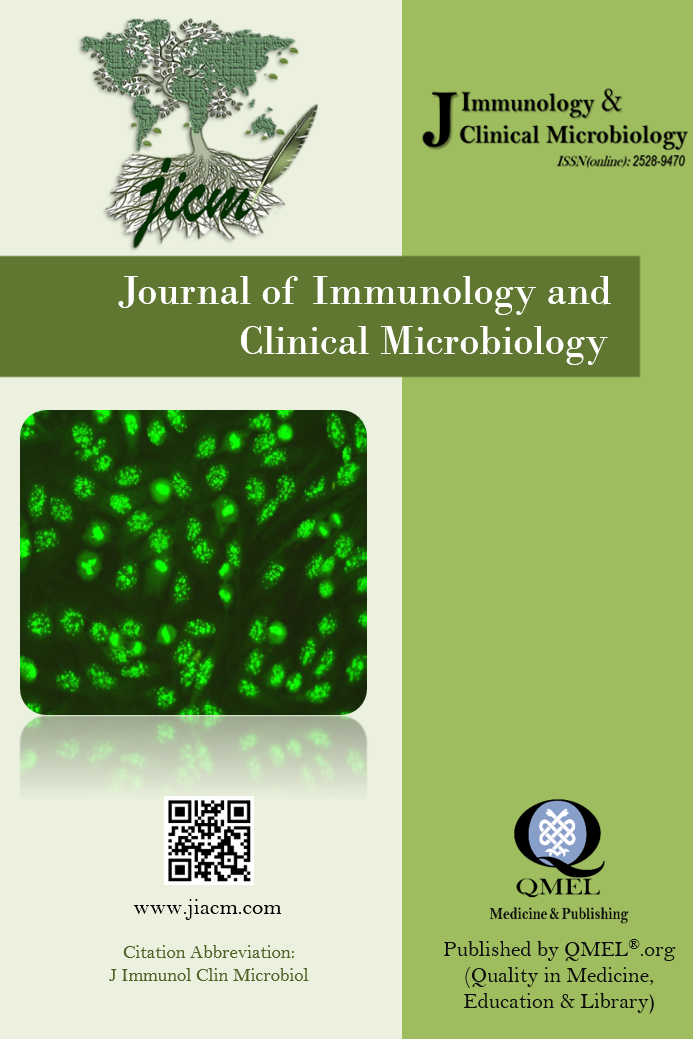Prevalence of rotavirus and adenovirus in children with acute gastroenteritis
Prevalence of rotavirus and adenovirus in children with acute gastroenteritis
Background: Rotaviruses and adenoviruses are the commonly isolated viral agents from the patients with acute gastroenteritis and cause severe diarrhea in children younger than five years. Epidemiologic knowledge of the prevalence of these viruses is important for infection control policies and vaccination programs. Under this scope, we aimed to present the prevalence of rotaviruses and adenoviruses and their seasonal variations among pediatric age group patients with the diagnosis of acute gastroenteritis, which was determined by the immunochromatographic method in our region. Material and Methods: We evaluated the stool samples of the pediatric age group patients with the diagnosis of acute gastroenteritis during one-year period of January 1st to December 31st in 2015 by using an immunochromatographic assay to determine the rotavirus and adenovirus antigens. Results: During the one-year study period we examined the stool samples of 7994 pediatric patients. Rotavirus antigen was positive in 453 (5.7%) of the samples, whereas adenovirus antigen was positive in 176 (2.2%) of the samples. Acute gastroenteritis cases due to rotavirus dominated mainly in winter (9.5%) and spring (8.9%) and adenovirus affected patients more in spring (3.2%) and summer (2.6%). Conclusion: We have determined the prevalence of rotavirus antigen positivity as 5.7% and adenovirus antigen positivity as 2.2%, which are both relatively low compared to the other studies from Turkey. Seasonal variations are only observed for rotaviruses. Prevalence rates from different studies conducted in different parts of the country together with the rates from this study, will contribute the baseline epidemiologic knowledge for implantation of vaccination programs and infection control policies in Turkey.
Keywords:
Rotavirus, adenovirus, acute gastroenteritis immunochromatography,
___
- Fajfr M, Stěpánová V, Plíšková L, Fajfrová J. Viral gastroenteritis in Eastern Bohemia Region of the Czech Republic. Epidemiologie, Mikrobiologie, Imunologie: Casopis Spolecnosti Pro Epidemiologii A Mikrobiologii Ceské Lékarské Spolecnosti J.E. Purkyne. 2014; 63: 88-91.
- World, Health, Organization. Accelerating progress on child survival since 2000, UN says. WHO: New York, Geneva; 2012, September 2012. http://www.who.int/mediacentre/ news/releases/2012/child_survival_20120913/fr/2012.
- Elliott EJ. Acute gastroenteritis in children. BMJ. 2007; 334: 35-40.
- Navaneethan U, Giannella RA. Mechanisms of infectious diarrhea. Nat Clin Pract Gastroenterol Hepatol. 2008; 5: 637-47.
- Celik C, Gozel MG, Turkay H, Bakici MZ, Ahmet Sami Güven AS, Elaldi N. Rotavirus and adenovirus gastroenteritis: time series analysis. Pediatr Int. 2015; 57: 590-596.
- Koroglu M, Yakupogullari Y, Otlu B, Ozturk S, Ozden M, Ozer A, Sener K, Durmaz R. A waterborne outbreak of epidemic diarrhea due to group A rotavirus in Malatya, Turkey. New Microbiologica. 2011; 34: 17-24.
- Lekana-Douki S, Kombila-Koumavor C, Nkoghe D, Drosten C, Drexler J, Leroy EM. Molecular epidemiology of enteric viruses and genotyping of rotavirus A, adenovirus and astrovirus among children under 5 years old in Gabon. Int J of Infect Dis. 2015; 34: 90-95.
- Durmaz R, Kalaycioglu AT, Acar S, Bakkaloglu Z, Karagoz A, Korukluoglu G, Ertek M, et al. Prevalance of Rotavirus Genotypes in Children Younger than 5 Years of Age before the Introduction of a Universal Rotavirus Vaccination Program: Report of Rotavirus Surveillance in Turkey 2014; PLoS One. 2014; 9:e113674.
- Glass RI, Parashar U, Patel M, Tate J, Jiang B, Gentsch J. The control of rotavirus gastroenteritis in the United States. Trans Am Clin Climatol Assoc. 2012; 123: 36-52.
- Versalovic J, Carroll KC, et al. eds. Manual of clinical microbiology. 10th ed. Washington, D.C: American Society of Microbiology Publishing, 2011:1456-1469.
- Yayın Aralığı: Yılda 4 Sayı
- Başlangıç: 2016
- Yayıncı: Erkan YULA
